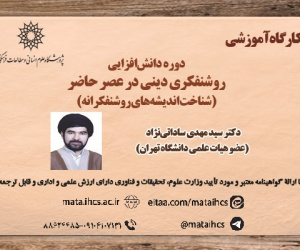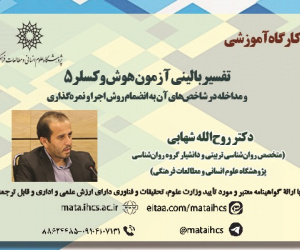تأثیر عناصر آب وهوایی در ایجاد فرصت های مجرمانه جرم سرقت - مطالعه موردی: شهرستان بندر انزلی (مقاله علمی وزارت علوم)
درجه علمی: نشریه علمی (وزارت علوم)
آرشیو
چکیده
این تحقیق در زمینه تأثیر آب وهوا بر جرم سرقت و توزیع فضایی جرم تأکید دارد. جرم زمانی اتفاق می افتد که مجرمان و اهداف بالقوه با هم تلاقی کنند. این پژوهش به بررسی تأثیر عناصر آب وهوایی در ایجاد فرصت های مجرمانه جرم سرقت در شهر ساحلی بندر انزلی بین سال های 1395 تا1399 تأکیدتأکید دارد. این تحقیق با ماهیت توصیفی تحلیلی و با رویکرد تحلیل زمانی و مکانی انجام گرفته است. واحد تحلیل تمام داده های جرم سرقت منزل ازپایگاه داده پلیس110 و داده های آب وهوایی از سایت هواشناسی معتبرجمع آوری شده است. برای تجزیه وتحلیل آماری داده ها از نرم افزار ArcMap استفاده گردیده است. جهت بررسی تعیین توزیع داده های جرم سرقت از شاخص میانگین نزدیک ترین فاصله همسایگی(ANN) استفاده شده است. برای پهنه بندی نقشه های جرم ازروش درون یابی (IDW) به کار گرفته شده است. جهت تخمین و برآورد تراکم جرایم سرقت از تابع کرنل استفاده شده است. در این تحقیق از روش حداقل مربع معمولی (OLS) استفاده گردید. بیشترین رخداد سرقت درمنطقه7انزلی، وکمترین وقوع سرقت در منطقه1 غازیان است. یافته های خلاصه نتایج مدل رگرسیون OLSدرموردمیزان تأثیر گذاری متغیر های عناصر آب وهوایی را در متغیر جرم سرقت را نشان داد که برخی ضرایب مثبت یا منفی است . به عنوان نمونه درفصل بهار با مثبت شدن ضرایب کمینه دما افزایش سرقت و با منفی شدن ضرایب بیشینه دما کاهش سرقت همراه هست. باتوجه به اینکه ارزش (VIF) ضریب تغییرات واریانس کمتر از 7/5 است و مقادیر به دست آمده برای برخی از عنصر نشان داد که می تواند پیش بینی مناسبی را از این رگرسیون انجام داد. برای تعیین رابطه سازگاری عناصر آب وهوا و جرم سرقت در فضای جغرافیایی نتایج آزمون کوئنکر (BP) نشان داد که در همه فصول سال مقدار p بیشتر از0/05 بوده که نشان از سازگاری این مدل با متغیرها است.این تحقیق به وضوح نشان داد که مجرمان رفتارهای مجرمانه خود را با شرایط وابسته آب وهوایی که با آن روبرو هستند، تطبیق می دهند.The Effect of Climatic Elements on Creating Criminal Opportunities for the Theft (Case Study: Bandar Anzali)
This study examined the impact of weather on theft crime and its spatial distribution. Crime occurs when offenders and potential targets converge. The research highlighted the role of climatic factors in creating opportunities for theft in the coastal city of Bandar Anzali between 2016 and 2020. The study adopted a descriptive-analytical approach with a spatiotemporal analysis perspective. The unit of analysis included all burglary data collected from the Police 110 database and climatic data obtained from a reliable meteorological source. Statistical analyses were conducted using ArcMap software. The Average Nearest Neighbor (ANN) index was employed to analyze the spatial distribution of theft data, while the Inverse Distance Weighting (IDW) interpolation method was used for crime mapping. Additionally, the Kernel Density Estimation (KDE) function was applied to estimate and predict theft crime density. The study also utilized the Ordinary Least Squares (OLS) model. The findings revealed that the highest occurrence of theft was in Zone 7 of Anzali, while the lowest was in Zone 1 of Ghāziān. The summarized results of the OLS regression model showed that climatic variables influenced theft crime, with some coefficients being positive and others negative. For instance, during spring, positive coefficients for minimum temperature were associated with an increase in theft, while negative coefficients for maximum temperature corresponded to a decrease in theft. Considering the Variance Inflation Factor (VIF) values, which were below 7.5, the regression model demonstrated reliable predictions for some variables. To assess the compatibility of climatic variables with theft crime in the geographical space, the results of the Breusch-Pagan (BP) test indicated that in all seasons, the p-value was greater than 0.05, showing the model's compatibility with the variables. This study clearly revealed that offenders adapt their criminal behaviors to the climatic conditions they encounter.







